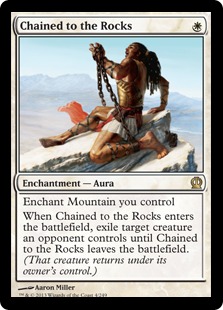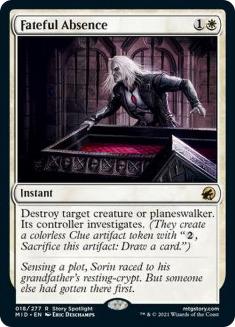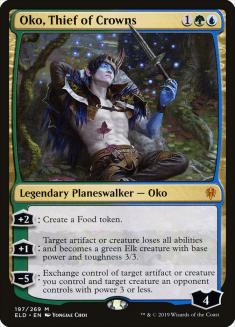Hello, and welcome to this edition of Sullivan’s Satchel. I’m in good spirits because… the drama is back!
I am somewhat removed from the competitive scene, and have been for some time, so the trajectory of Organized Play doesn’t impact me directly very much. That said, the ripple effects are there, most notably the lack of cheap heat in the competitive community. Now, one could argue that the Hall of Fame debates debased the entire community, and that the broader anger doesn’t really serve any larger purpose anyway. To that I say an emphatic “no.” I’m here for all of it. With that, I’d like to offer some advice for navigating these waters more effectively.
If you have tried to get over talking trash about people with a higher competitive stature, turnabout is fair play. Normally I have heuristics about “punching down,” but once someone initiates the conflict, especially if it seems they have hopes of monetizing it, all bets are off.
Your 40-minute YouTube video defending your conduct or ratcheting up the conflict is nowhere near as cool, dignified, thoughtful, or effective in practice as it is in your imagination, or in an aggregation of the feedback of your inner circle, most of whom are either reticent to push back on you when you’re amped up, or have meta-incentives that optimize for your public humiliation.
Never reply to someone on Twitter if you can’t handle the quote tweet/dunk combo. Check in with yourself before replying if you think there’s any chance of it. I break out the blowtorch once or twice a year on my Reply Guys and they always seemed surprised. Don’t let that be you.
And that’s it, really. I might pivot this column more in this direction, since I’ve never been dunked on, owned, or anything else of the sort online. A pristine lifetime record.
With that, the questions. As always, you can send your in to [email protected] or DM me on Twitter @BasicMountain. I answer the questions as they come in and my mood permits, and one question a column is selected as Question of the Week™, with its author receiving $25 in SCG credit.
From Shawn Smart:
I feel there are enough play sets in Modern now that a Restricted List should be considered.
Because the Restricted List kind of sucks. It’s a crude balancing mechanism that was grandfathered in because of the peculiarities of the time. I was around for it, so I can provide a little context.
At the time, competitive Magic was exclusively Type 1 (nowadays known as Vintage), and the notion of banning all of the most powerful cards was unpalatable. The best cards were also the most valuable, and there were so many outliers that banning only a few would only get you so far. Restriction was an inelegant patch that solved the near-term problem — you could still play your Moxes and busted blue cards, but hopefully not to an extent that it was the only thing to do in a competitive setting, or made the game unplayable if one player owned them and the other didn’t. (Note: this didn’t actually work in practice; there were so many of them that “playing all the restricted cards” was a powerful thing to do almost no matter how you filled out the margins. I’m just speaking to the principles here.)
Because it has been around so long and has “worked” for Vintage, I think the idea of applying it to other formats gets more credibility than it deserves. How fun is the game being determined by someone drawing their outlier that’s restricted on rate? How effective is it as a balancing tool when people can tutor; do you want to balance all the tutors around how powerful they are alongside restricted cards? Vintage at least doesn’t ban on power level; how easy is it to memorize a list of banned cards alongside a (presumably lengthy) list of restricted cards? How do you decide banning versus restriction?
Restriction doesn’t even alleviate the economic costs of banning cards, assuming most of the price derives from its legality in the format in question, since needing one copy is so much fewer than needing four. I think it’s best to let restriction be the exclusive method of balancing in Vintage, and otherwise lean on bannings to sculpt the other formats.
From ZManuel:
I’m guessing that Fateful Absence is much weaker overall, but it does have a few things going for it. The biggest is the mana; the dual lands are not the most reliably for generating white mana and having a Mountain to cast Chained to the Rocks on. Sometimes you have to make do with two copies of Battlefield Forge, and Chained to the Rocks isn’t useful there. There are plenty of ostensibly useful lands (Needleverge Pathway, Den of the Bugbear) that you can play in small doses, but not in the representation you could if Chained wasn’t part of the equation.
Nissa, Who Shakes the World is one of the most powerful cards against the deck, and many Green Devotion lists have ways to remove enchantments. I’m not sure if it would improve this matchup in the aggregate — one mana is so much less than two, and sometimes the game drags on such that giving them a Clue isn’t free — but it’s possible Fateful Absence slightly moves the needle there in a positive direction overall.
The toughest sell for me is how powerful Chained is when you’re going second or under duress, and how important it is to optimize your sideboard cards for situations that are the most dire, not necessarily the most common. I think Fateful Absence is plausible enough that it’s at least worth testing, but barring the introduction of enough nonbasics that come at the expense of Mountains, I wouldn’t expect it to be better overall.
From Friend of the Satchel™ Ben Seitzman:
I would argue that Lesson/Learn in Strixhaven is an adjacent but significantly better execution. It has the same essential characteristic, an extremely limited set of cards that facilitate some “spells matter” and/or “generic card advantage/stuff to do when you flood out,” but there are several key distinctions.
- Non-instant and sorcery cards are part of the equation. Splice onto Arcane is as all-in as it gets on card types; it only appears on instants and sorceries, both Arcane as a characteristic and Splice into Arcane as a mechanic. Lesson/Learn triggers off of other card types, and some of the Lessons, like Expanded Anatomy, actually reward you for having a creature.
- Diminishing Returns. Once you go down the Splice path, it’s very hard to justify playing with anything other than Arcane. Lesson/Learn is intrinsically on diminishing returns, because the second and subsequent triggers are likely to get something weaker than the first, and because the mechanic asks you to eat up sideboard slots to enable it in the first place. In short, it’s essentially impossible to do “nothing but Learn,” and the opposite is true of Splice.
- Nowhere near as repetitive. When your opponent splices a Glacial Ray onto something, it’s a pretty hopeless experience if your deck revolves around small creatures. Even if your opponent has a particular Lesson that’s strong against you, typically they cast their one copy and then everyone moves on with life.
I think the first part is the real key here. There are a number of ways to go about doing it, but diversifying the card types represented has to be the underpinning thing, otherwise the odds you produce dynamic, replayable games is essentially a rounding error.
Lastly, the Question of the Week™, from Erik Halterman:
Fantastic question, in part because some competitive players struggle to imagine what this could even mean; the fun rests in winning, so who cares how we get there? But most players, even competitive ones, find some ways of losing more stimulating than others. At root, it boils down to two key things:
- Was I still emotionally invested in my draw step? Did I have hope I could turn it around? Some of this speaks to how “lock out”-y a card is, some of it speaks to if it is accumulating advantages that the opponent can overcome or not, and some of it comes down to how invasive the card in question is towards the draw step specifically. As long as the game was interesting and I had hope up until my last turn that maybe I could turn it around, that can be fun and exciting even if I lose. Someone has to, anyway.
- If I do lose, how interested am I in trying again? Some of this speaks to how miserable the card is in practice, and some of it speaks to how wide the implied space of interacting with it is. Oko, Thief of Crowns is a great example of a busted card that fails this test. Since it collapses each permanent into the same thing, it isn’t satisfying to look at your collection and imagine the cards you could add to improve your chances.
It’s a recurring punchline how people post “no counters/land destruction/discard” in the casual rooms of Magic Online (MTGO), but I think it’s very revealing on this topic. Those mechanics, at a certain power level or ubiquity, destroy emotional investment in the draw step (because the game is some combination of hopeless, long, and all of my cards having the same very low level of efficacy), and isn’t a particularly interesting puzzle to engage with. The stuff that makes you feel like you were a topdecked Terminate away from turning it around, or which implies a wide range of possible responses even if you don’t play with any of them, produce way more satisfying losses than stuff like Oko, The Abyss, or Zur’s Weirding.





